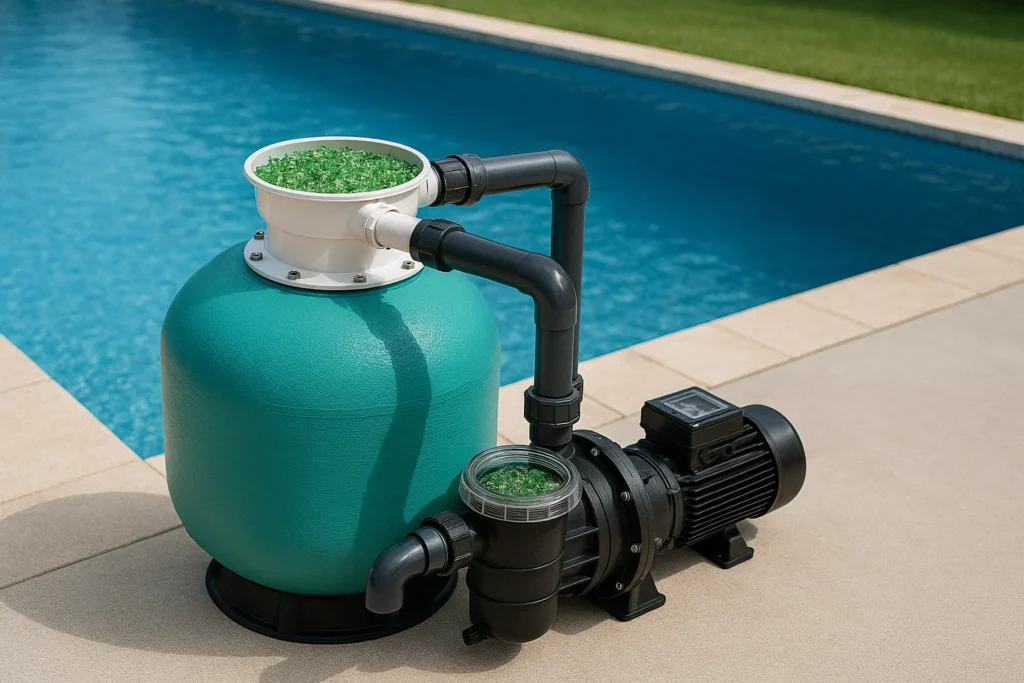
What is TDS?
Total Dissolved Solids (TDS) refers to the concentration of dissolved substances in water, including organic and inorganic matter. Measured in milligrams per liter (mg/L) or parts per million (ppm), TDS consists of minerals, salts, metals, cations, anions, and organic compounds.
In wastewater treatment, managing TDS levels is critical, as high concentrations can affect water quality, industrial processes, and environmental health.
TDS Levels and Their Significance
TDS levels vary depending on the source of the wastewater and its intended use after treatment. Here’s a general classification:
- Low TDS (0-500 mg/L): Suitable for potable water, drinking water, and sensitive applications such as semiconductor manufacturing.
- Moderate TDS (500-1,500 mg/L): Acceptable for some industrial processes but may require treatment for reuse or discharge.
- High TDS (1,500-5,000 mg/L): Common in industrial effluents, requiring advanced treatment technologies to meet regulatory standards.
- Very High TDS (>5,000 mg/L): Found in brine, reject streams, and concentrated industrial discharges, necessitating specialized treatment methods like evaporation or crystallization.
Classification of TDS: Organic vs. Inorganic
TDS is broadly categorized into organic and inorganic components, each with distinct characteristics:
Inorganic TDS
Inorganic dissolved solids primarily include minerals and salts, which can originate from natural sources or industrial activities.
- Common Inorganic TDS Components: Sodium, chloride, calcium, magnesium, sulfates, bicarbonates, nitrates, and heavy metals.
- Sources: Industrial discharge (textiles, electroplating, pharmaceuticals), municipal wastewater, agricultural runoff, and saline intrusion.
- Impact: Can lead to scaling in pipelines, toxicity to aquatic life, and increased osmotic pressure affecting biological treatment processes.
Organic TDS
Organic dissolved solids consist of carbon-based compounds that originate from natural or synthetic sources.
- Common Organic TDS Components: Pesticides, phenols, hydrocarbons, detergents, volatile organic compounds (VOCs), and pharmaceuticals.
- Sources: Industrial effluents, domestic sewage, leachates from landfills, and food processing waste.
- Impact: Can contribute to oxygen depletion in water bodies, toxicity to aquatic life, and formation of disinfection by-products (DBPs) when treated with chlorine.
Is TDS Always Bad?
TDS is not inherently harmful; its impact depends on concentration and composition. Some dissolved solids, like essential minerals (calcium and magnesium), are beneficial, while excessive levels of harmful substances (heavy metals, nitrates, sulfates) pose environmental and health risks.
The acceptability of TDS levels is dictated by regulatory frameworks such as the USEPA, BIS, and WHO.
Addressing TDS Levels Before Selecting a Treatment Method
Before implementing a wastewater treatment solution, it is essential to assess and characterize TDS levels through laboratory analysis. The following factors should be considered:
- Source Identification: Understanding whether TDS originates from industrial, municipal, or natural sources.
- TDS Composition Analysis: Determining whether the dissolved solids are primarily inorganic, organic, or a combination of both.
- Treatment Objectives: Establishing whether the goal is reuse, discharge compliance, or resource recovery.
- Pre-Treatment Needs: Identifying the necessity of pre-treatment methods such as coagulation, pH adjustment, or filtration.
Wastewater Treatment Technologies for TDS Removal
Depending on the concentration and nature of TDS, different treatment technologies can be employed:
- Ion Exchange: Effective for removing specific inorganic ions such as hardness-causing calcium and magnesium.
- Reverse Osmosis (RO): A widely used membrane-based process for removing a broad range of dissolved solids, including both organic and inorganic compounds.
- Electrodialysis (ED) and Electrodialysis Reversal (EDR): Suitable for selective ion removal, often used in brackish water treatment.
- Evaporation & Crystallization: Ideal for treating highly concentrated TDS wastewater, particularly in Zero Liquid Discharge (ZLD) applications.
- Advanced Oxidation Processes (AOPs): Useful for degrading organic TDS components, breaking down complex organic molecules.
- Biological Treatment (Specialized Systems): Select microbial strains can degrade certain organic dissolved solids, though their effectiveness varies.
TDS plays a significant role in wastewater treatment, influencing both process selection and regulatory compliance.
While not all TDS is harmful, excessive levels—especially of toxic inorganic and organic compounds—necessitate proper treatment.
A thorough analysis of TDS composition and concentration is essential before selecting an appropriate wastewater treatment technology, ensuring cost-effective and sustainable water management solutions.





